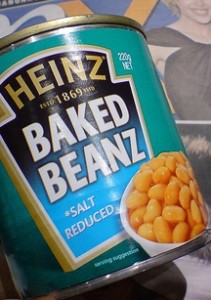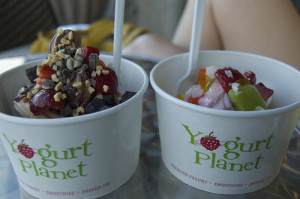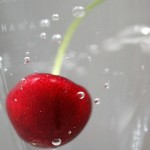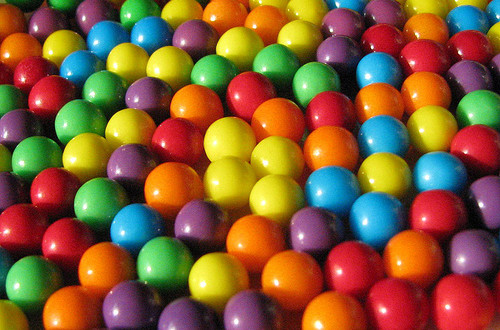by Michelle Sutton-Kerchner
A return to brown-bagged meals and cafeteria lunches is a great time to examine your nutritional consciousness. How much sugar is in your diet? The answer affects everything from your heart to your waistline …
Life Is Sweet
It’s hard to turn down a sweet treat. After all, the most delightful aspects of life are equated to sweetness. You can be sweet on someone, have a sweetheart, be called a sweetie, get a sweet deal. No other food gets such highly esteemed associations. And, when we wish to reward ourselves or celebrate, we enjoy everything from a cookie to birthday cake. Sweets are a large offering at parties, in treat bags, via musical-truck distribution. Rare is an occasion where sweets are not invited.

Beyond the colorfully wrapped candies and gooey cookies, which scream sugar’s presence, hidden sugar lurks in many unexpected foods and beverages. Even your best efforts to eat healthy can be sabotaged. Many fat-free or low-fat foods use sugar to replace taste in these products. Reduced-fat dressing and fat-free baked goods are examples, where fat is traded for large quantities of added sugar. The lesson: “Healthful” is not always as perceived.
The origin of fats traded for sugars can be traced back to nutrition science of the 1960s. Rising rates of obesity and heart disease were blamed on excess saturated fats in the American diet. Today, fat makes up a smaller portion of the American diet than it did 20 years ago. However, the obese population has grown. The high consumption of sugar is considered the culprit.
Sickeningly Sweet Statistics
The average American consumes approximately 20 teaspoons of sugar daily. The American Heart Association advises the daily limit as nine teaspoons for men (150 calories worth) and six teaspoons for women (100 calories worth). Sugar consumption peeked in 1999, with the average American consuming 422 calories daily from the stuff, up from 333 calories from added sugars in 1970.
How do we manage to consume all that sugar every day. Consider:
One 12-oz can of soda: 8 teaspoons of sugar (almost a man’s recommended daily limit)
Low-fat yogurt with fruit: 6 teaspoons (a woman’s recommended daily limit)
One hardly would suspect reaching the limit with one beverage or an afternoon snack. Imagine avoiding desserts and treats all day, only to learn you still consumed too much sugar, unaware. Bummer. Be a label reader. Know the ingredients in your food. If you are going to indulge, make it count rather than be at random.

Along with enhancing flavor, sugar is used to add texture, preserve processed food to extend shelf life, balance acidity, and act as a bulking agent. Sometimes, it is thrown in for color. Wouldn’t you rather enjoy your sugar allotment for better reasons?
In addition to the obvious desserts, snacks, and beverages, we unknowingly consume sugar from a plethora of other sources. Further damage is added by complex carbohydrates that break down in the body as sugars. Highly refined starches like white bread, pasta, and French fries have the same effect on blood sugar levels as consuming sugar directly.
What’s the Harm?
Sugar from natural sources like fruit, vegetables, milk, and certain grains is an acceptable part of a healthy diet. These foods are packed with other nutrients– vitamins, minerals, fiber. However, the added sugar often used in today’s food does not have any nutritional value. Sometimes, it is added for reasons unrelated to taste.
Combined with other ingredients commonly found in these foods, like solid fats, they become calorie dense. When too much of your diet accounts for this type of empty calories, you fill up without consuming the daily necessary nutritional requirements like fiber and essential vitamins and minerals. You are fueled on junk, with what little “fuel” you manage.
Many nutritionists claim excessive sugar consumed, both willingly and unknowingly, has led to a national sugar addiction. Sugar stimulates the same “feel-good hormones” triggered by recreational drug use. Although not nearly as serious, it does cause similar patterns of avoiding, craving, and binging. Blood sugar swings can lead to nervousness, shakes, and cold sweats. Cutting back on sugar may produce withdrawal symptoms, including irritability and fatigue. Whether a poor eating habit or a full-blown addiction/eating disorder, this physical and mental reaction indicates an unhealthy use of sweets.
Fake sugars are not a fix-it patch for those trying to wean. Their general use is controversial. They also will not reduce your craving for sugar but rather fuel it. Honey, brown sugar, and cane sugar affect blood sugar the same as any other form. Substituting with these is not an improvement.

A vicious circle, excessively eating sweets (addictively, as considered by some) leads to low energy. After the initial sugar rush, energy is sapped and so is the motivation to exercise. The sweet habit alone can cause weight gain. Along with contributing to a sedentary lifestyle, it sets the path for obesity, diabetes, heart disease, tooth decay, and a list of other health problems.
Train Your Taste Buds
Just like other body parts, taste buds can be trained. Make it a learning process, rather than cold-quitting sweets. Learn to enjoy food with less sweeteners. Make a quick and simple start: Reduce consumption of sugary drinks. Save sweets for sweets sake, not as a beverage to accompany a meal. Mindful enjoyment. When having a sweet treat, give it full attention, center stage.
Many mistakenly opt for iced tea or fruit juice as a healthier choice over soda. This may be true, but those drinks have plenty of sugar as well. Instead, chose low-fat milk or water with fresh lemon. As for flavored coffee, a typical pump of flavored syrup sweetener has about 70 calories per ounce. Topped with whipped cream and a drizzle of chocolate– we’re talking serious treadmill time.
Fill up on fruits and vegetables. Let natural sugar satisfy your cravings for sweets, such as found in fresh fruit. Leave less room for nutritionally void choices. Decrease consumption of processed foods, which hide added sugars. Moderate the amount of dressing and sauces used. Use reduced-sugar options when buying jelly, jam, and syrups. Be sure they are truly reduced in all sugars. Many varieties add fake sugar as substitutes. Look for the “ose” ending, as in sucrose, to find sugars of a different (and often less tasty) variety.
Avoid hunger-driven snack attacks. Keep blood sugar levels steady by reducing sugar intake and eating healthy snacks frequently throughout the day. Power your meals and snacks with protein and fiber to stay satisfied longer and curb hunger. Peanut butter is a great way to enhance crackers and fruit with protein. When hungry, we reach for quick, easy foods. Make sure you have plenty that are healthy. Otherwise, imagine the damage a box of cookies can do!
Slowly decrease the sugar you add to your bowl, plate, and mug. Eventually, spoonfuls will dwindle to a sprinkling of grains. Once you eliminate, it is likely you never will drink sweetened tea again. Train your taste buds. Make them work for your health.
Use exercise to fuel your taste-bud training. The physical and mental lift obtained provides natural motivation to eat healthier. And, good nutrition is one of the best assets to any fitness program. One healthy step begets others. Soon, healthy habits, and their favorable outcome, trump the donuts.
Losing Weight
If weight loss is your goal, focus less on sugar consumption and more on overall dietary requirements and fitness. A calorie is the same, whether it originates from a forkful of salad or a spoonful of ice cream. Weight loss occurs when more calories are burned than consumed.
 Eating more calories, sugar or otherwise, than you burn off results in stored fat. Moderation of all foods is key. Even the healthiest dishes add pounds when eaten in excess, followed by a night in front of the TV. And for all those indulgent moments, there is your workout. A healthy diet is a balanced diet of natural ingredients. Yes, with the proverbial cherry on top.
Eating more calories, sugar or otherwise, than you burn off results in stored fat. Moderation of all foods is key. Even the healthiest dishes add pounds when eaten in excess, followed by a night in front of the TV. And for all those indulgent moments, there is your workout. A healthy diet is a balanced diet of natural ingredients. Yes, with the proverbial cherry on top.
Sources
“Added Sugar: Don’t Get Sabotaged by Sweeteners,” www.mayoclinic.com
“Sugar Love,” by Rich Cohen, National Geographic magazine, August 2013.
“Tracking Sugar or Tracking Calories,” by Jillian Michaels at www.everydayhealth.com.
“The Truth About Sugar Addiction,” at webmd.com.
Image Credits
Colorful candy (introductory photo): www.flickr.com/photos/8136496@N05/2099062718
Baked beans: http://www.flickr.com/photos/avlxyz/4294526945
Yogurt: http://www.flickr.com/photos/joeyparsons/3692599004
Sugar crash: www.flickr.com/photos/dan4th/2873057087
Cherry: www.flickr.com/photos/s_fox/358189265
 Fitness & Wellness News Your Source for Fitness News, Wellness News, Health News, and Nutrition News!
Fitness & Wellness News Your Source for Fitness News, Wellness News, Health News, and Nutrition News!




